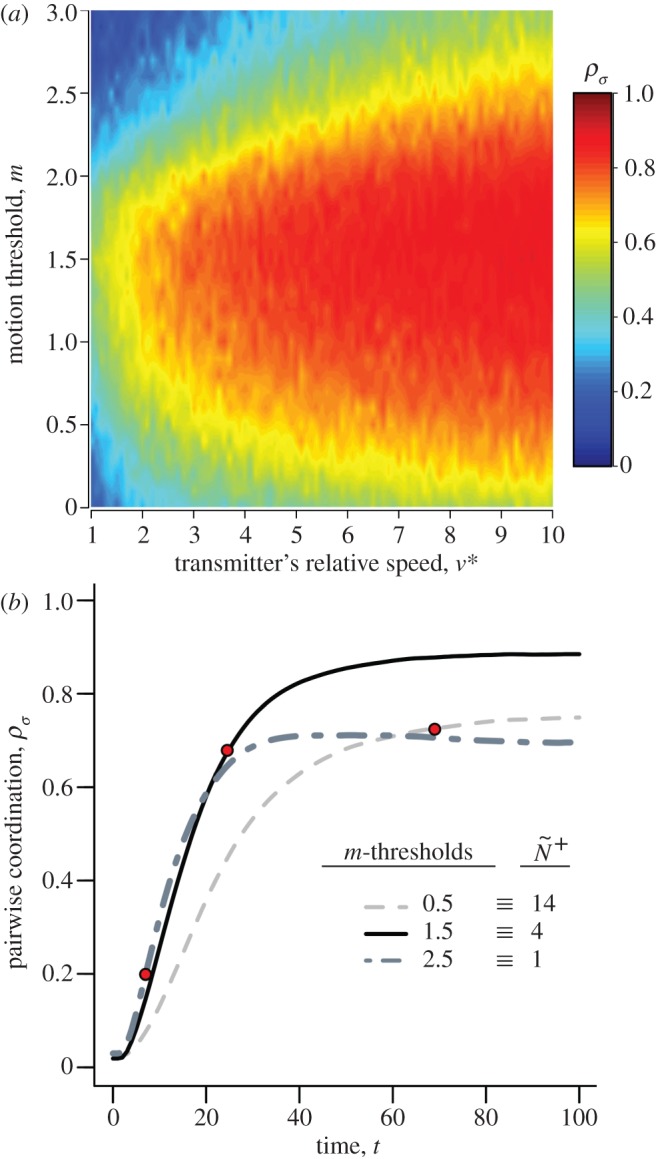Figure 2.

(a) Coordination accuracy between transmitter–receiver pairs (T–R, t = 100) as a function of the transmitter's motion cue, v*, and the receiver's motion threshold, m. (b) Time series of the average trends in T–R coordination during a social disturbance (v* = 10) for three attention levels. Red dots indicate the median time that receivers tracked their transmitter's motion through the crowd (i.e.  ; equation (2.3)). v* is limited to
; equation (2.3)). v* is limited to  to reflect the saturation point seen in (a) and corresponds to the relative speeds displayed by startled fish [34]. Trend lines in (b) reflect median values that are all smoothed by the same exponential moving average. Parameter values and conditions match those in figure 1.
to reflect the saturation point seen in (a) and corresponds to the relative speeds displayed by startled fish [34]. Trend lines in (b) reflect median values that are all smoothed by the same exponential moving average. Parameter values and conditions match those in figure 1.
